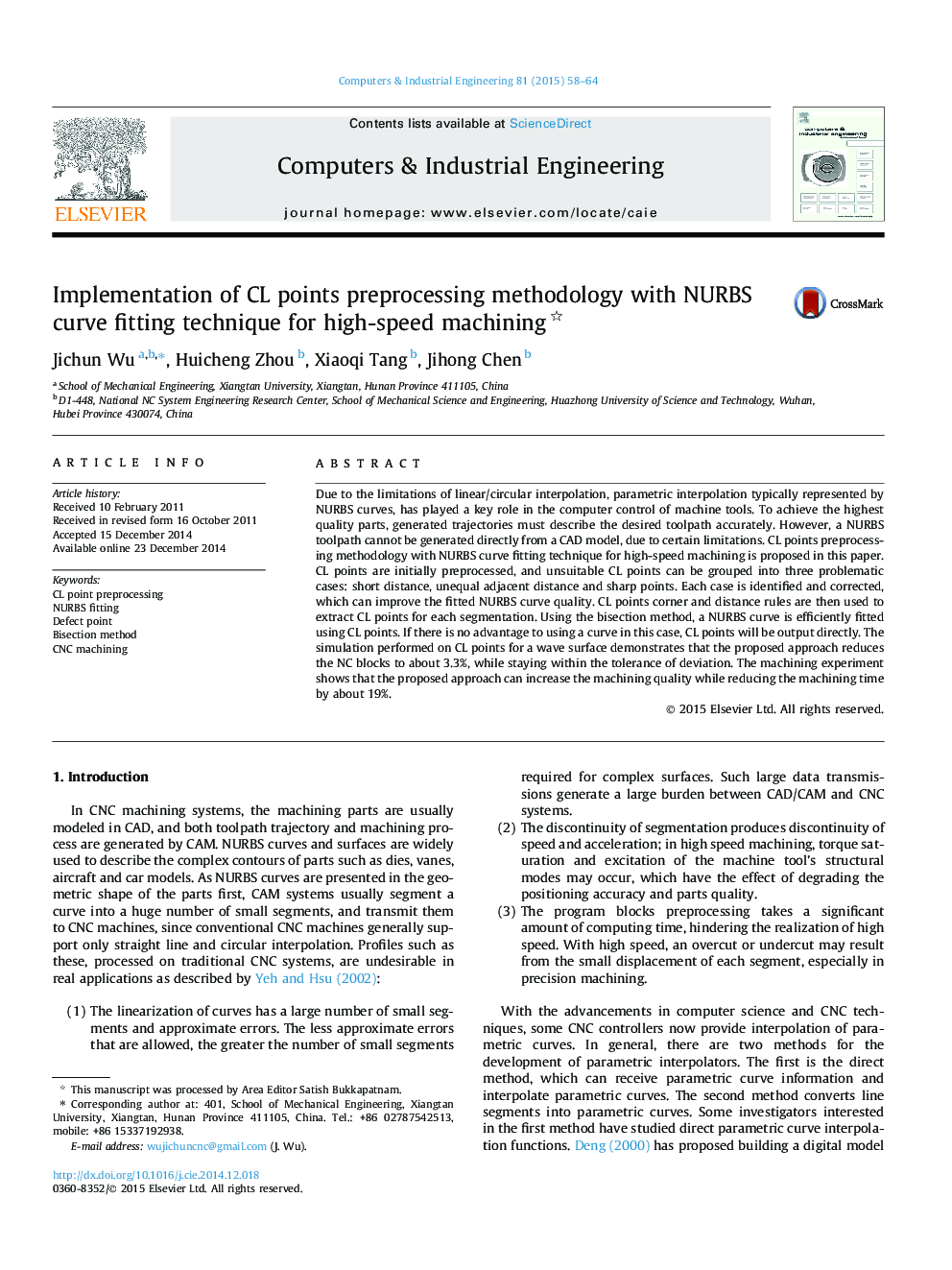| کد مقاله | کد نشریه | سال انتشار | مقاله انگلیسی | نسخه تمام متن |
|---|---|---|---|---|
| 1133767 | 1489085 | 2015 | 7 صفحه PDF | دانلود رایگان |

• CL points can be grouped into three problematic cases: short distance, unequal adjacent distance and sharp points.
• Using the bisection method, a NURBS curve is efficiently fitted using CL points.
• The simulation performed on CL points for a wave surface demonstrates that the proposed approach reduces the NC blocks to about 3.3%, within the tolerance of deviation.
• The machining experiment shows that the proposed approach can increase the machining quality while reducing the machining time by about 19%.
Due to the limitations of linear/circular interpolation, parametric interpolation typically represented by NURBS curves, has played a key role in the computer control of machine tools. To achieve the highest quality parts, generated trajectories must describe the desired toolpath accurately. However, a NURBS toolpath cannot be generated directly from a CAD model, due to certain limitations. CL points preprocessing methodology with NURBS curve fitting technique for high-speed machining is proposed in this paper. CL points are initially preprocessed, and unsuitable CL points can be grouped into three problematic cases: short distance, unequal adjacent distance and sharp points. Each case is identified and corrected, which can improve the fitted NURBS curve quality. CL points corner and distance rules are then used to extract CL points for each segmentation. Using the bisection method, a NURBS curve is efficiently fitted using CL points. If there is no advantage to using a curve in this case, CL points will be output directly. The simulation performed on CL points for a wave surface demonstrates that the proposed approach reduces the NC blocks to about 3.3%, while staying within the tolerance of deviation. The machining experiment shows that the proposed approach can increase the machining quality while reducing the machining time by about 19%.
Journal: Computers & Industrial Engineering - Volume 81, March 2015, Pages 58–64